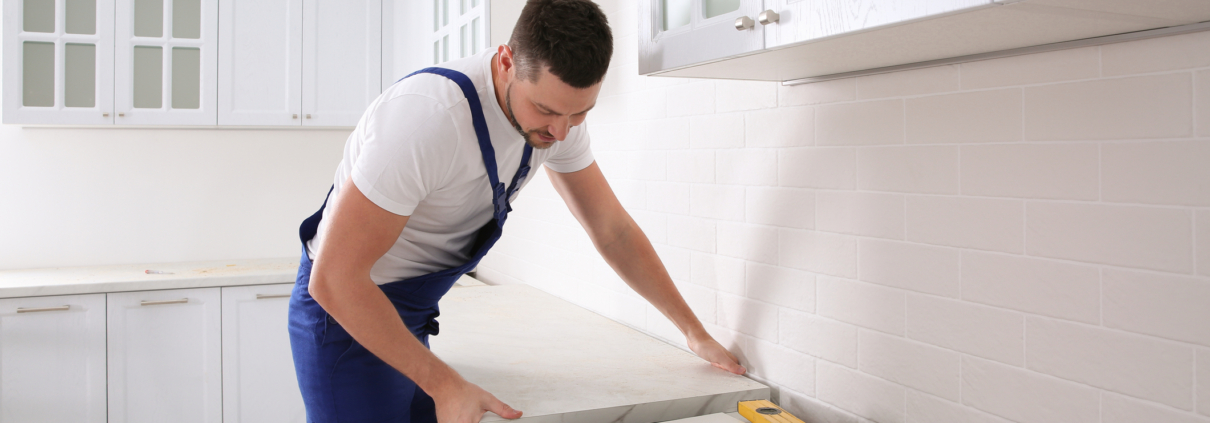Difficulties with Stone
The long list of benefits that stone provides as a surface material make it an obvious winner for any interior or exterior project. However, to enjoy those benefits fully, you need to be prepared for the more difficult aspects of stone countertop installation and maintenance! Here are a few things to keep in mind as you decide what stone is right for you.
Necessary Sealing
Especially for more porous stone like limestone and granite, sealing the surface of the stone is essential for further protection against potentially harmful forces. While the durability of stone itself is one aspect that makes it such an impressive and desirable surface material, it is not completely impervious to damage or deterioration. Without sealant, stone is more susceptible to scratches, chips, cracks, and even disintegration from acidic substances. Sealant also makes the surface easier to clean, and creates a more naturally sanitized surface because the nonporous finish makes other substances completely unable to embed itself in the stone. If you want your stone to last (and to stay at the high quality you purchased it at,) using a sealant finish is absolutely necessary!
Cost of Installation and Repair
Stone’s long lifespan is another characteristic that makes the material a popular choice among property owners. However, stone is also significantly more expensive than artificial vinyl or wood. Especially with large surface areas like flooring, fireplaces and large countertops, the price of stone per square foot adds up quickly and requires a substantial budget for investment. The cutting of the stone and the installation also add to the overall cost—these both require professional contractors for successful and safe installation.
Maneuvering Installation Process
Getting the stone into your home and installed correctly is a tricky process—moving such large, heavy slabs of rock throughout your home (which is likely made of more sensitive and easily damaged materials) puts your walls, floors, and possessions at risk of damage. Furthermore, the slabs need to be cut precisely; ill-fitting pieces will leave gaps and unfinished spaces, and can make your space look awkward and incomplete. Stone installation requires that you prepare your entire home for the transportation of the slabs inside, not just the space where the stone will be installed!
Look into the various worktops available to you, and start making the preparations you need to budget, seal, and install your stone into your home!




Leave a Reply
Want to join the discussion?Feel free to contribute!